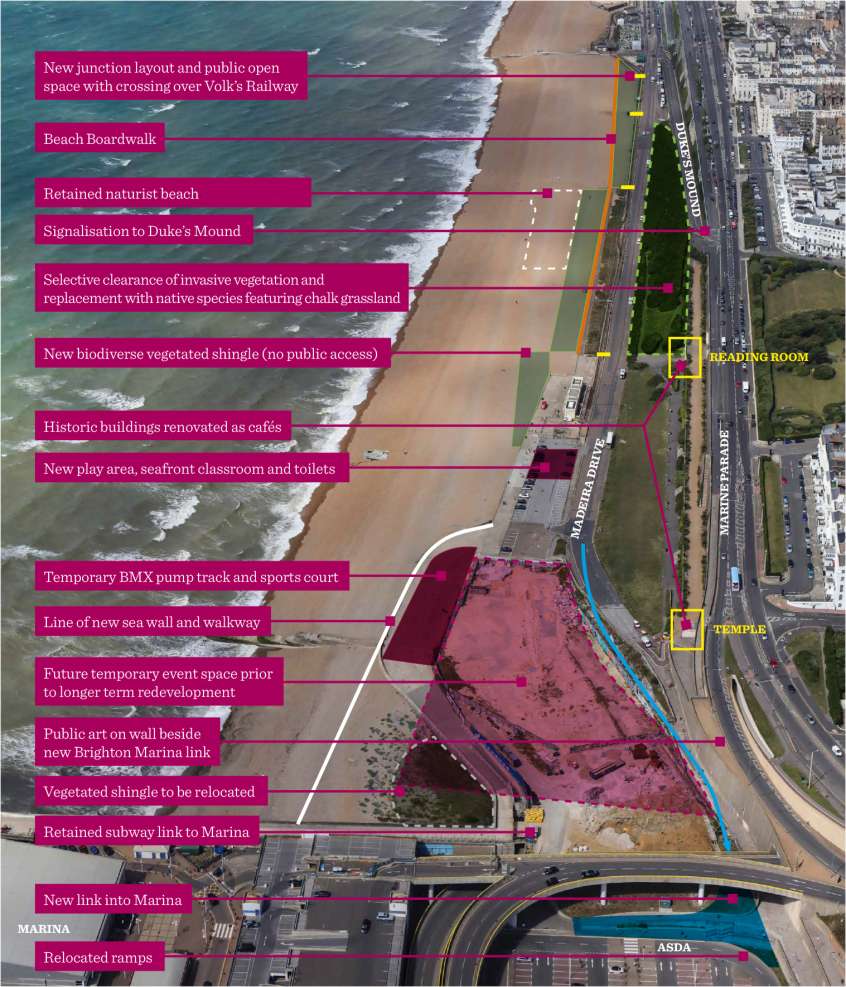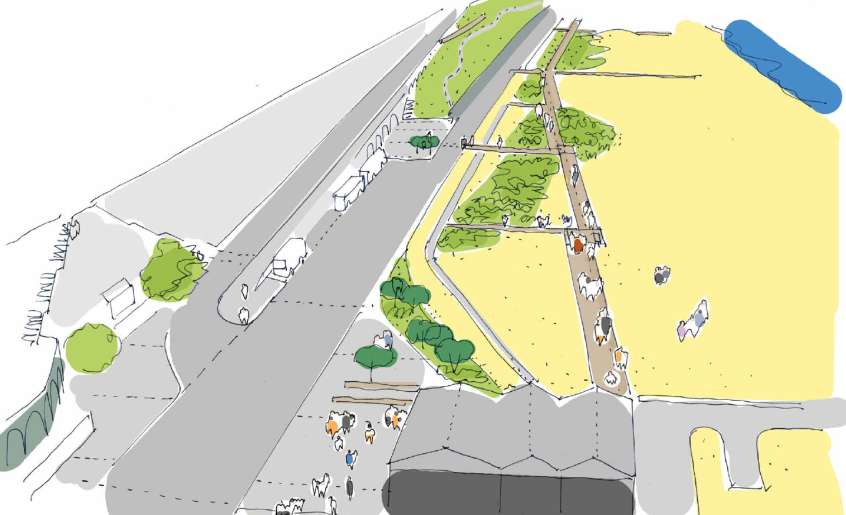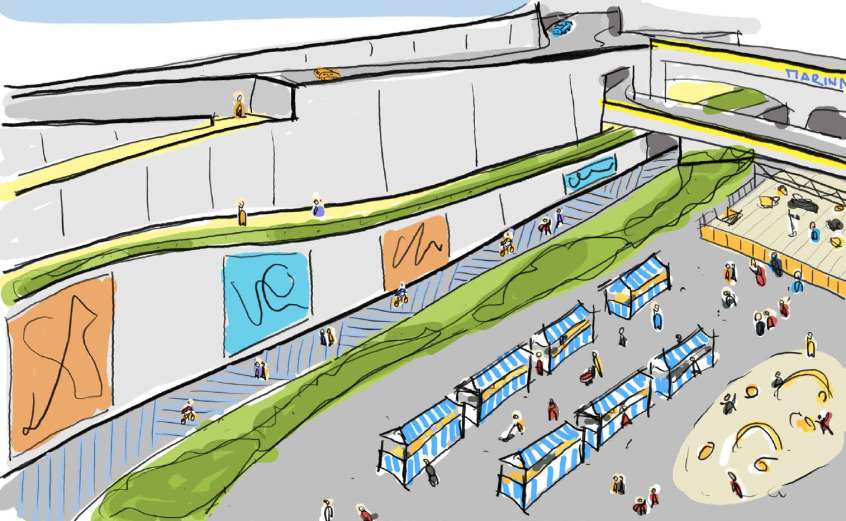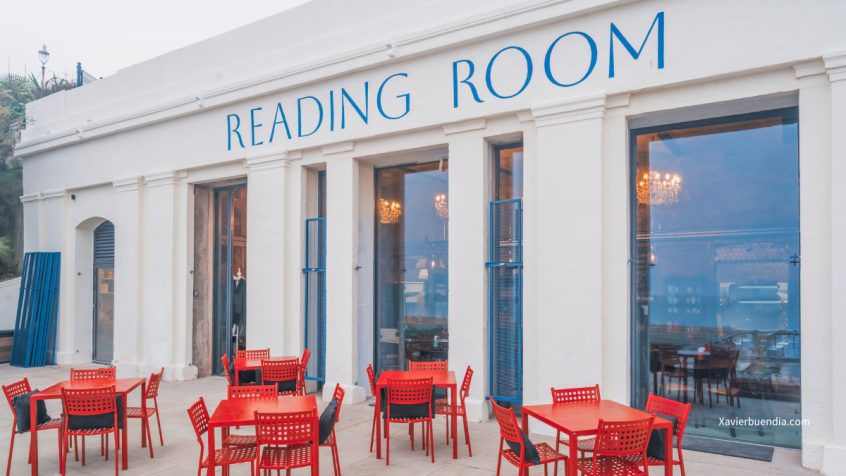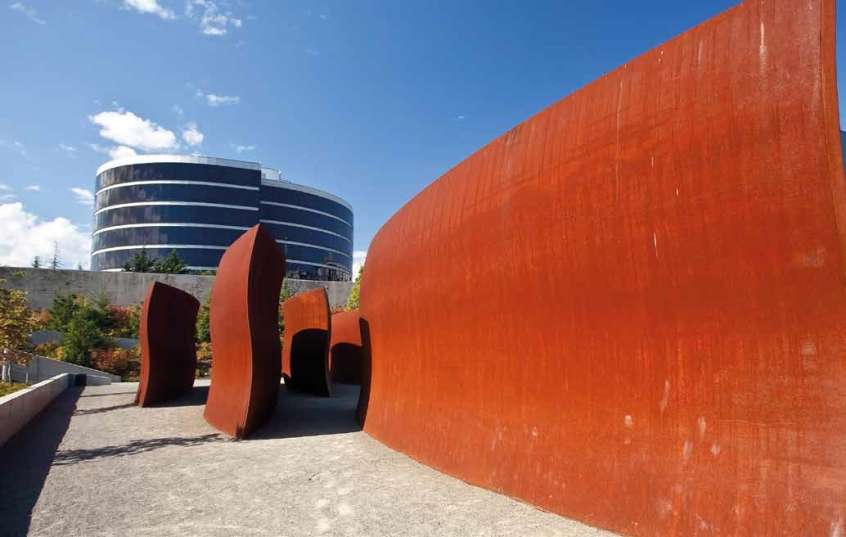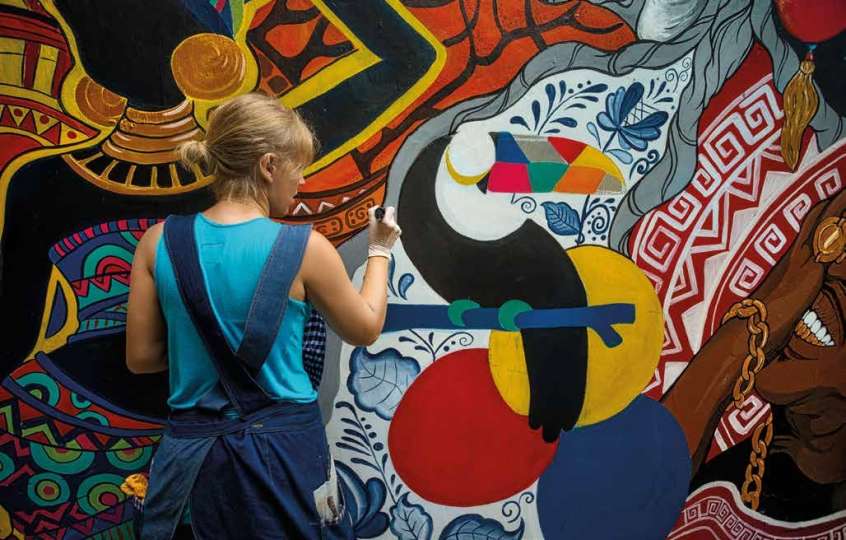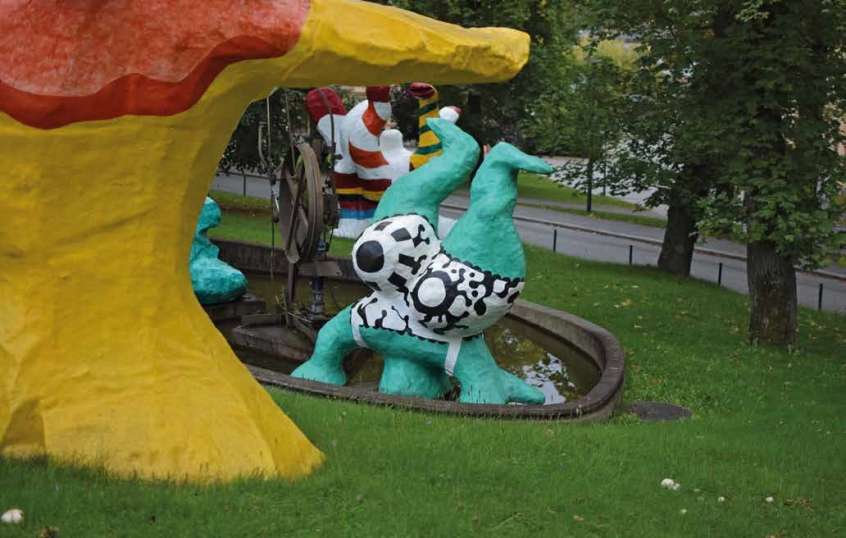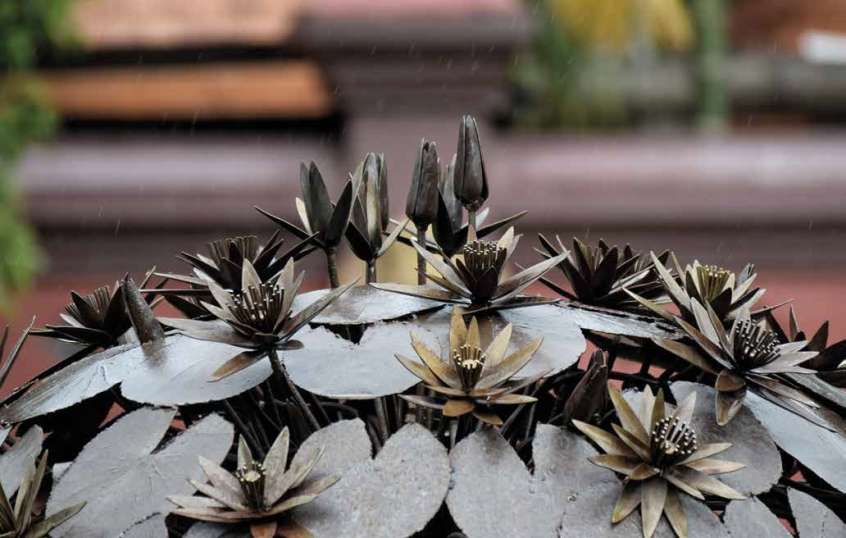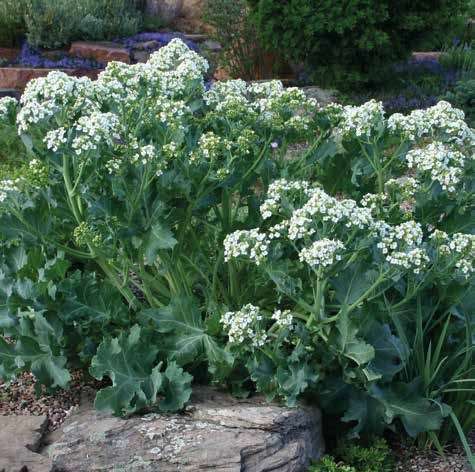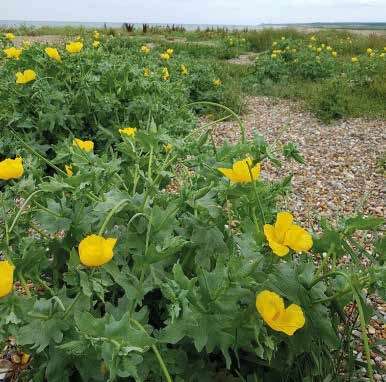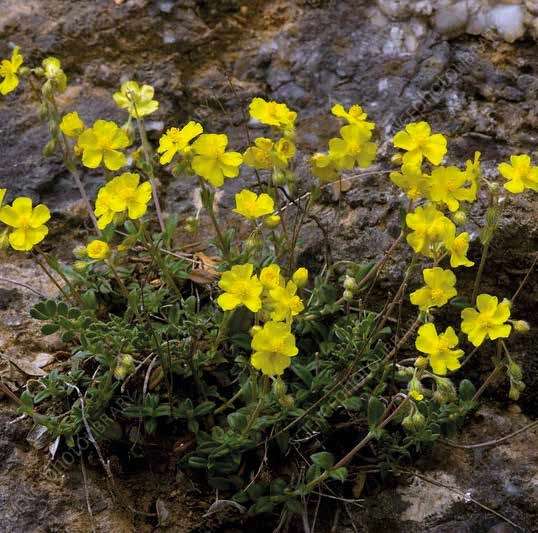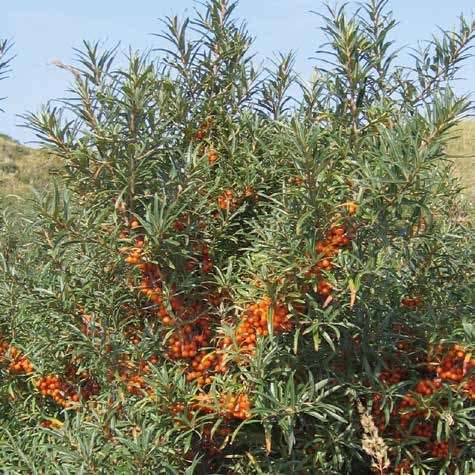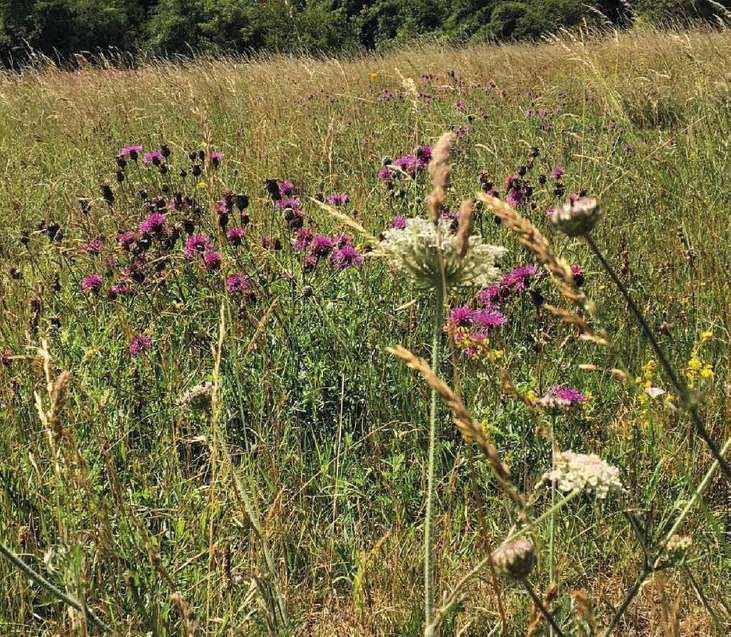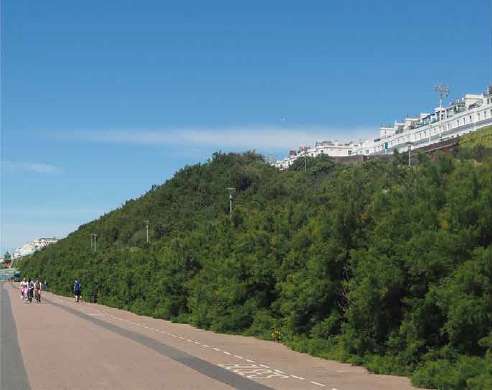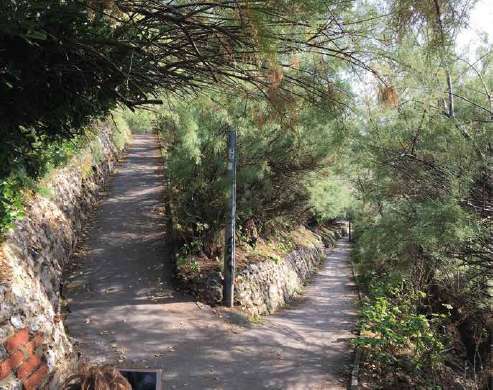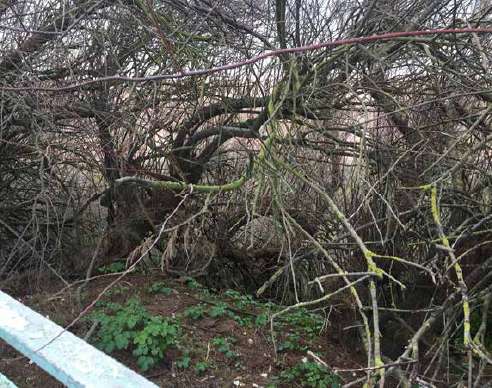Phase 1 and 2
Phase 1 - update
We have developed the Black Rock rejuvenation project to resolve the problems that have led to the Black Rock site remaining vacant for over 40 years. We have also started to improve the local area by making it more accessible and visually appealing as part of these phased improvements.
The project is being led by Brighton & Hove City Council, with funding provided by Coast to Capital Local Enterprise Partnership.
The aspiration to redevelop this important seafront site has not happened because of a range of reasons. We are addressing these via the new infrastructure works.
So far we have delivered:
- a realigned and extended sea wall
- improved coastal defences
- a decontaminated and levelled site
- a new beach boardwalk from the Volk’s Station at Black Rock to the Volk’s Workshops at the junction with Duke’s Mound
- junction upgrades at Duke’s Mound to improve pedestrian and cycle safety.
- a new sustainable transport link between the eastern seafront and Brighton Marina
In the short term, the Black Rock site will host outdoor events, and the new infrastructure will improve the experience for all visitors to the area.
Phase 2
In the longer term (approximately 3 years), a permanent redevelopment will begin at Black Rock. In December 2022, Policy & Resources Committee agreed to produce a development brief for the future development of this important site by spring 2024. During this time the site can be used as an outdoor entertainment space.
